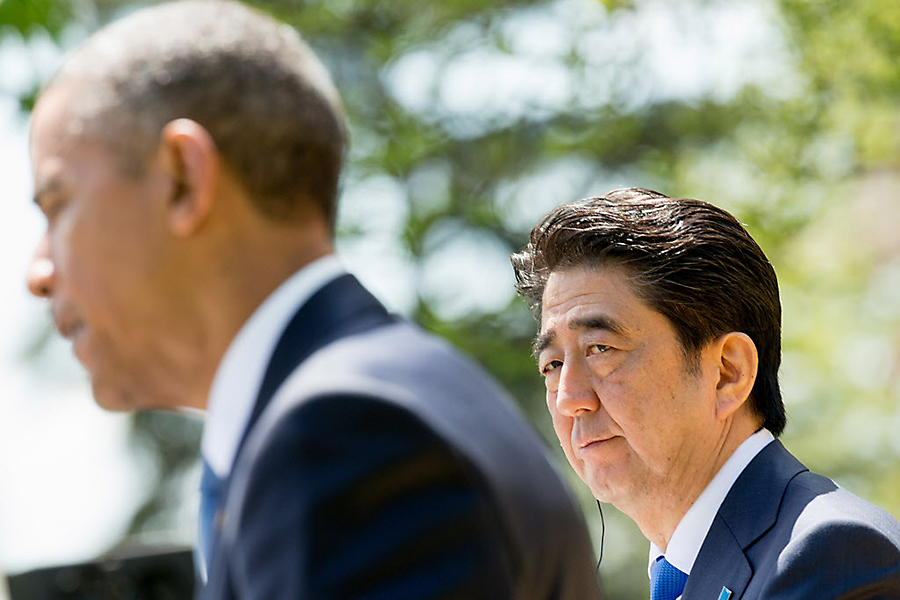First Japanese leader to visit Pearl Harbor: Why now?
Loading...
Prime Minister Shinzo Abe will become the first Japanese leader to visit Pearl Harbor when he travels to Hawaii at the end of the month during the 75th anniversary of Japan's air raid on the US naval base near Honolulu
Mr. Abe said Monday that at Pearl Harbor he would “pay tribute” to military personnel from both sides of the Pacific who died during World War II.
“The visit is to comfort the souls of the victims,” Abe told reporters in Tokyo, as The Washington Post reported. “We’d like to send messages about the importance of reconciliation [between the two countries].”
In its confirmation of the visit, the White House also emphasized this symbolic bookend to President Obama and Abe’s relationship. The two leaders have sought to show the world how former arch enemies can become allies with a shared vision for peace and security.
While Mr. Obama emphasized this when he became the first US president to visit Hiroshima in May, this theme has gained added significance since Donald Trump was elected president. Obama’s successor has questioned the cost of the US contribution to the security of Japan and other allies.
Abe plans to visit Pearl Harbor on Dec. 26 and Dec. 27 to pray for the war dead and hold his final summit with Obama before the US president leaves office next month. Abe’s visit would also come six months after Obama visited Hiroshima, the site of one of two nuclear bombings in 1945 that forced Japan to surrender, and four months after Abe’s wife, Akie, made a surprise visit to Pearl Harbor.
At the time of her visit, Ms. Abe, known for making free-thinking comments and actions that can be politically awkward for her husband, said it was time for Japan to move on.
“I understand that there are various debates and stances on Pearl Harbor, but I think that we have to pass on the memory to the next generation, transcending the feelings of hate and anger,” she said, according to The Japan Times.
In Japan, Pearl Harbor is largely seen as an attack on a military installation, according to the Associated Press. On Dec. 7, 1941, Japanese torpedo planes, bombers, and fighter planes, made a surprise air raid on the American naval base, killing 2,300 US servicemen. This attitude about Pearl Harbor contrasts how they see the nuclear bombings of Hiroshima and then Nagasaki three days later, which killed more than 200,000.
Obama’s visit to Hiroshima and Akei’s visit to Pearl Harbor fueled speculation the Japanese prime minister would reciprocate. While Abe denied in May he was considering it, speculation continued that Abe would come during the final days of the Obama presidency.
The visit is likely to anger more conservative members of Abe’s right-wing government, according to The Washington Post. They promote a revisionist view of Japan’s history, and seek to restore Japan’s pride in its imperialist past. In the past, Abe has promoted parts of this agenda, making a controversial visit in 2013 to the Yasukuni Shrine, which counts convicted war criminals among the nation’s war dead.
The celebration of the Japanese-US relationship also comes as Japan worries it could change under Obama’s successor. President-elect Trump has questioned the United States's military contribution to Japan and other allies. Trump had previously spoken about the possibilities of Japan needing to acquire nuclear arms, paying the US for keeping forces on Japanese soil, and Trump’s opposition to the Trans-Pacific Partnership (TPP) free trade pact. Abe met with Trump in New York last month, saying Trump is a “trustworthy leader.”
This report contains material from the Associated Press and Reuters.







